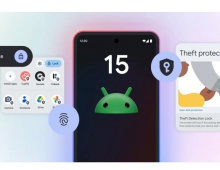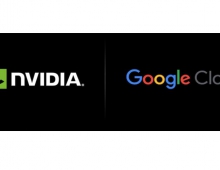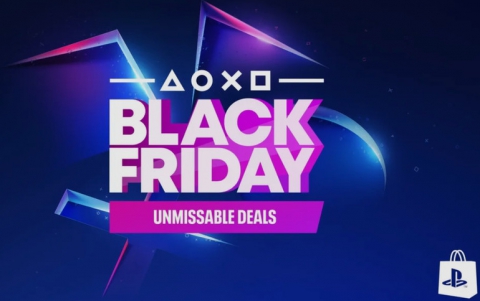Google Pixel XL Manufacturing Cost is in Line with Rival Smartphones
With $278 in total BOM costs, the Google Pixel XL handset sells for an unsubsidized price of $769, a ratio comparable to those for the Apple iPhone 7 Plus and Samsung Galaxy S7 Edge. The bill of materials (BOM) cost for the new Google Pixel XL 5.5-inch phone with 32 gigabytes (GB) of NAND flash memory comes to $278, according to a preliminary teardown estimate from IHS Markit.
After including $7.75 in basic manufacturing costs, the total cost to manufacture the Google Pixel XL rises to $285.75. With an unsubsidized price of $769, the direct manufacturing cost-to-sales-price ratio is in line with those of direct competitors in the smartphone market, such as the Apple iPhone 7 Plus and the Samsung Galaxy S7 Edge. The Google Pixel is also available as a 5.0-inch model.
Total BOM costs for the Google Pixel XL are, not surprisingly, in line with those of other competitors, because the supply base and specs are very similar from phone to phone-whether it’s an iPhone, a Galaxy-series phone or the Google Pixel XL.
The Google Pixel may also have an advantage for now over counterparts offered by Android rival Samsung, given the permanent withdrawal from the market of the Galaxy Note 7 after manufacturing defects caused the phone’s batteries to explode.
Some eight years after the launch of the first version of Android, and with Apple iOS and Google Android settled as the dominant platforms, Google has 'tripled down' on Android by vertically integrating its smartphone design. The Pixel is the first-ever phone by Google to carry the company’s brand name.
Google has now taken over all aspects of the hardware design and software integration, and this vertical integration of hardware and software is a product strategy taken straight out of Apple’s playbook. Google through the Pixel is directly competing with Apple, but also rivaling its own Android ecosystem partners in introducing new premium hardware to compete with the likes of Samsung, Huawei and LG.
Similar to Apple's relationship with Foxconn, HTC Corp. is the final assembler of the Pixel phone. While HTC has experience building its own phones, Google executives said they were responsible for the Pixel’s supply chain, design, and engineering.
The Pixel comes in two variants-the 5.0-inch Pixel and the 5.5-inch Pixel XL-along with two memory capacities (32 and 128 GB). On top of the Google-designed hardware is the new Google Pixel launcher or "skin," which imbues the smartphone with a user-experience design that is new and ostensibly more efficient than any original equipment manufacturer (OEM)-specific design available. For their part, existing OEMs have weighed down Android with their specific look and feel by creating bloated software that run on top of older Android versions.
Both the Pixel and Pixel XL feature an aluminum enclosure with active-matrix organic light-emitting-diode (AMOLED) displays, which also are utilized for Google’s Daydream virtual reality platform. Moreover, Google spared no expense in packing the Pixel designs with cutting-edge hardware configurations. Both Pixel models also come with 4 GB of LPDDR4 RAM and Qualcomm’s latest Snapdragon 821 CAT-12 LTE modem design, supporting up to three-carrier aggregation and maximum theoretical download speeds of 600 megabits per second (Mbps). With the Pixel, Google is also signaling a design trend toward a complete Qualcomm system-on-chip (SoC) and radio frequency (RF) design; the Galaxy Note 7 featured the last such RF360 design.
Another important feature of the Pixel is the high-end mobile photography capabilities of its 12-megapixel camera, with a large 1.55-micrometers (μm) imaging pixel size. While the primary camera does not have optical image stabilization (OIS) in the module, an electronic OIS is provided through the sensor fusion that takes out video shakes via software. In fact, the Pixel’s camera is optimized to take advantage of the available hardware so that it compares favorably to the best camera phones available today from Apple and Samsung.
Google’s Pixel and Pixel XL sport battery ratings of 2,770 and 3,450 milliamp hours (mAh), respectively, for a very capable 13 to 14 hours of use time over 4G Long Term Evolution (LTE) internet. The Pixel also leverages Qualcomm’s QuickCharge 3.0 technology, embedded in the Snapdragon chipset, providing seven hours of use with just 15 minutes of charging. But similar to versions of the Nexus, Google’s previous phone offering, the Pixel does not include wireless charging functionality. More surprisingly, however, Google neglected to include a water-resistant enclosure design on the Pixel. In contrast, the Apple iPhone 7 and Samsung Galaxy S7 both have IP67 or higher ratings to protect those phones against both dust and liquids.




















